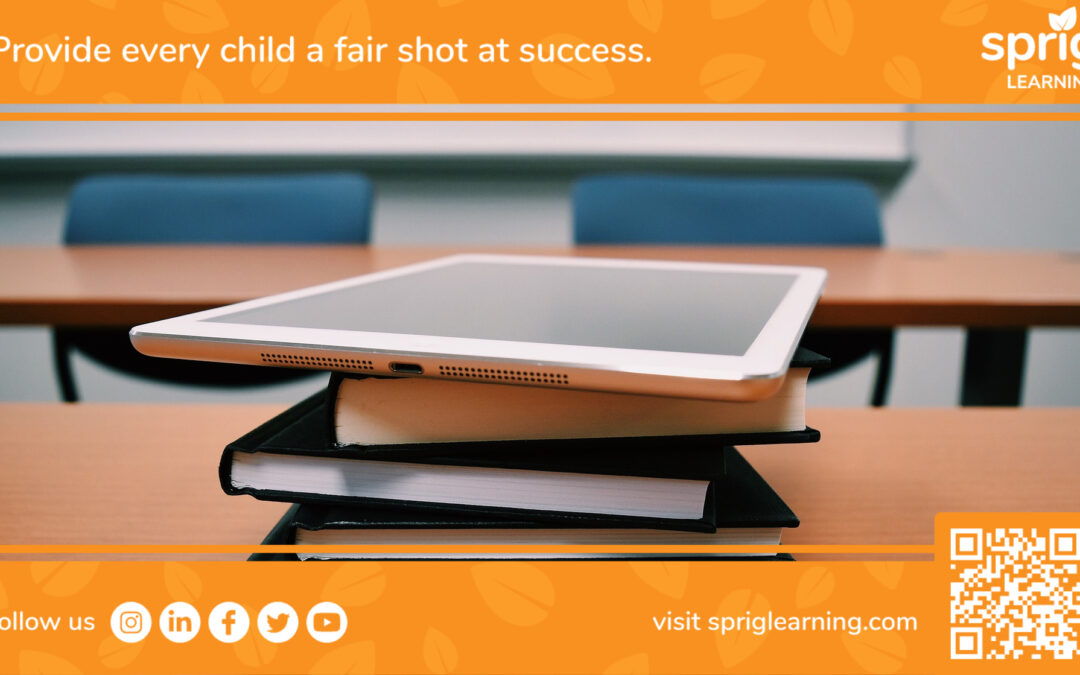Despite $18 billion spent each year on professional development (PD) in schools across the United States, the lack of satisfactory PD and training in the primary grades continues to be a recurrent theme in early learning. It was identified as one of the 5 major early learning challenges faced by schools, along with the lack of time, lack of pay, resource shortage, and learning loss.
It’s not enough to have more and more PD. PD should be goal-oriented and improved upon annually to meet the demands of educators. Particularly at a time when there is a call for more evidence-based practices to be taught in teacher training programs and implemented in classrooms, PD needs to be strategic.
When done right, PD can be a tool for strategic reading instruction.
It can consolidate and further advance the learning gained from teacher preparatory programs on evidence-based instruction.
Furthermore, it can introduce these concepts to teachers who have not heard of them before.
Most importantly, it can provide practical and actionable guidance to teachers by which they can improve reading proficiency for their students.
This article explores the goals of PD for strategic reading instruction and the ideal components of PD. It subsequently discusses the types of PD that are available, and the expectations of a high-quality PD program.
Professional Development for Strategic Reading Instruction

Professional development (PD) is the ongoing training received by teachers to improve their skills, knowledge, and expertise as a teacher. School districts provide PD to teachers to educate them about curricular adoptions or other school-wide and classroom initiatives.
From a teachers’ perspective, learning must introduce and reinforce the latest teaching practices so teachers can better support their students. Teachers also want PD to be aligned with the vision of their school district. Additionally, teachers want to improve their professional skills and methods which they know produce the best results for early reading success.
For strategic reading instruction, all three of these reasons are important on their own merit.
Ongoing Learning
If there are new ways, methods or approaches to teach young students the science of reading, teachers should be equipped with this knowledge.
Vision Alignment
If the school has a particular goal towards improving reading scores, teachers must evaluate what they can do within the given timespan, to work towards achieving this goal. This can include seeking help or consultation.
Optimizing Teaching Practice
Teachers have amazing classroom insights. Rather than overhauling the way teachers teach, it’s more likely that the information learned and knowledge gained in PD sessions will be used to bolster existing teaching practices. The best case scenario for PD is when the teacher can use the information presented to address concerns, and improve their existing teaching practice.
Components of Professional Development for Excelling in Reading Instruction

The positive effect of professional development on student reading performance is well established, where increased quality of teaching and greater teacher knowledge improves reading outcomes.
In a meta-analysis of 35 studies that featured an experimental design, controlled for student characteristics and other contextual variables, seven commonly shared PD traits were identified that lead to successful student outcomes.
Successful PD programs:
- Focus on teaching strategies associated with specific curriculum content.
- Incorporate active learning to get hands-on experience in designing and practicing teaching strategies.
- Support collaboration with other teachers, members of teaching staff and paraprofessionals.
- Uses models of effective practice.
- Provide coaching and expert support.
- Offer opportunities for feedback and reflection.
- Is of sustained duration.
When choosing PD, it’s important to ask if these seven components are reflected in the program. PD today can be executed in multiple ways. Some examples follow in the next section.
Professional Development Examples in Early Literacy

Professional development today is much more than passive training outside of school hours. Sometimes, it is collaborative in nature, and is integrated into the daily teacher schedule.
Also, PD need not necessarily consist of just one activity or session at a particular point in time. PD can take the form of a PD plan, which can consist of multiple PD activities conducted over a certain period of time.
Today’s world of high-speed communications is advantageous for professional development, where it’s possible to have interactive learning sessions from the comfort of your home or school office, as well as collaborate with others who may not be in the same vicinity.
PD such as action research, attending conferences, curriculum planning, curriculum mapping, professional books and journals, peer coaching, workshops, and/or seminars can now all be conducted online. Of course, there are certain advantages to doing them in-person and in-school.
There are other forms of PD which cannot be conducted by using virtual means only. They best lend themselves to being done on site. Namely: classroom/school visitation, education exchange and examining student work.
There is another class of PD that is more long-term, such as: professional development schools, leadership development programs, journaling and school improvement teams.
As long as these PD modalities have the seven characteristics covered in the previous section, the likelihood of success of early readers increases.
Professional Development Expectations

What does ideal PD for early reading instruction look like?
Due to the:
- range of modalities varying in length, location and timespan
- the variety of goals that range from support, alignment and improvement
- and the specific content area addressed by PD
…there are many options for constructing the ideal PD.
Sprig Learning provides evidence-based PD that is grounded in foundational reading skills that have been proven to create successful readers by Grade 3.
All of the PD material is the final product of decades of research and reports on effective reading instruction. All of the workshop best practices are packed into Sprig Reading, an evidence-based interactive tool for Pre-K to 2 teachers. It is designed to be used with any reading program or approach.
Attend Sprig’s Early Reading Assessment, Instruction and Planning Interactive Workshop this Tuesday, October 11. As the first part of a multi-part workshop series on evidence-based instruction, educators can expect to learn what has worked best for classrooms engaged in strategic reading instruction.
Sprig Reading workshops contain information that can be integrated into existing curriculums across multiple content areas to improve reading scores. They are created to help teachers support both pre-emergent and emergent readers.
By attending these workshops, teachers can expect to increase their knowledge on the assessment-instructional link, progress monitoring and goal-setting for both individual readers and smaller groups of students with similar needs.

